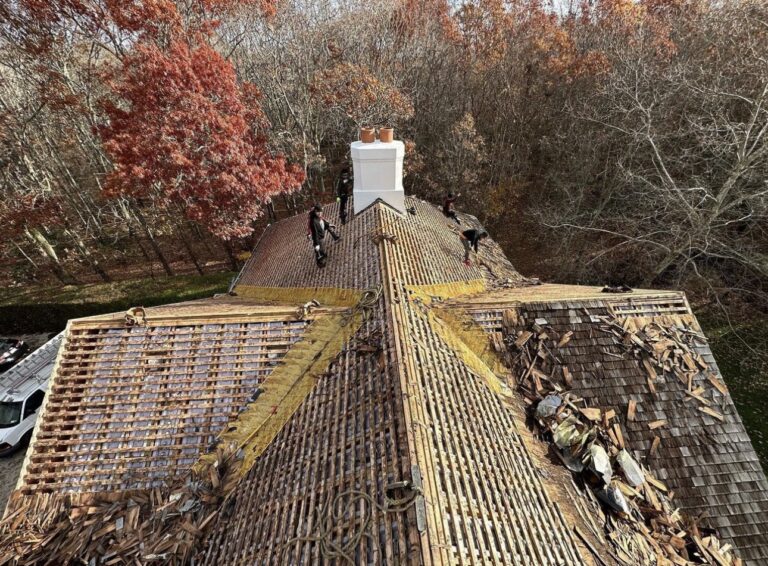When considering a new roof installation, taking the proper steps before the project begins is essential to ensure a smooth process and a successful outcome. The steps to take before starting a new roof installation are critical to making sure everything goes according to plan, from selecting the right materials to ensuring the proper preparation is done. This will not only improve the longevity and safety of your new roof but also reduce the likelihood of unexpected issues during the installation.
Assessing the Need for Roof Replacement
Before moving forward with a new roof installation, it is crucial to assess whether a roof replacement is necessary. Some homeowners may wonder if minor repairs can be made to extend the life of their current roof, but certain signs may indicate that a full replacement is the best course of action. Extensive damage, significant wear and tear, or leaks that have affected the structural integrity of your roof are all indications that you may need a new roof. Consulting with a professional roofing contractor can help you make the most informed decision about whether you need a roof replacement.
Choosing the Right Roofing Materials
One of the most important decisions you’ll make during the roof installation process is choosing the right roofing materials. There are a variety of roofing materials available, each with its own benefits and considerations. Asphalt shingles, metal roofing, tile, and slate are just a few of the options to choose from. Factors such as climate, aesthetic preferences, and budget will all play a role in determining which material is right for your home. It’s essential to consult with a roofing professional to discuss the different materials, their advantages, and how they will perform in the long term.
Hiring a Reputable Roofing Contractor
Selecting a reputable roofing contractor is one of the most important steps to take before starting a new roof installation. Your contractor will be responsible for managing the entire installation process, ensuring that the work is completed correctly and efficiently. Take the time to research local contractors, read reviews, and ask for recommendations from friends or neighbors. A reputable contractor should be licensed, insured, and have a proven track record of successful roof installations. Don’t hesitate to ask for references or examples of past projects to ensure that they have the experience and expertise needed for your roof installation.
Obtaining Necessary Permits
Before your roofing project can begin, you may need to obtain certain permits from your local municipality. Depending on your location and the scope of the installation, building codes and regulations may require specific permits for a roof replacement. A reputable roofing contractor should be familiar with the permitting process and can help you navigate the necessary steps to ensure compliance with local laws. Failing to obtain the proper permits can result in fines or delays, so it’s important not to overlook this step before starting the installation.
Preparing Your Home and Property
Proper preparation of your home and property is essential to ensure a smooth roof installation. First, you will want to clear the area around your home to give the roofing team easy access to your roof. Move any vehicles, patio furniture, or other obstacles that could interfere with the project. It’s also a good idea to protect your landscaping by covering plants and shrubs with tarps or plastic sheeting to prevent damage from falling debris. Additionally, it’s helpful to notify your neighbors about the upcoming project to avoid any disruptions or surprises.
Setting a Realistic Budget
Another important consideration before starting a new roof installation is setting a realistic budget. Roof replacements can be a significant investment, so it’s essential to understand the costs involved upfront. The price of a roof installation can vary depending on factors such as the size of your roof, the materials you choose, and the complexity of the project. Getting multiple quotes from different contractors can help you compare prices and find the best deal for your needs. Be sure to factor in not just the cost of materials and labor, but also any additional expenses such as permits or disposal fees.
Understanding the Timeline of the Project
Before starting your roof installation, it’s important to have a clear understanding of the timeline for the project. A new roof installation typically takes several days to complete, depending on the size of the roof and the complexity of the job. Weather conditions can also impact the timeline, as rain or high winds may cause delays. Your roofing contractor should provide you with an estimated timeline and keep you informed about any changes to the schedule as the project progresses. Having a clear timeline will help you plan for any disruptions and ensure that you are prepared for the completion of your new roof.
Ensuring Proper Roof Ventilation
Proper roof ventilation is essential for the long-term health of your roof and your home. Good ventilation helps regulate the temperature and moisture levels in your attic, preventing issues such as mold growth, ice dams, and premature roof wear. Before starting a new roof installation, ensure that your contractor includes proper ventilation in the design of your new roof. This may involve adding vents or installing a ventilation system that will help keep your attic well-ventilated throughout the year.
Communicating Your Expectations
Before the installation begins, take the time to communicate your expectations clearly with your roofing contractor. This includes discussing any specific concerns, preferences, or requirements you may have for the project. For example, you may have specific design preferences, or you may be concerned about the impact of the project on your daily routine. Open communication is key to ensuring that your contractor understands your needs and can deliver the results you expect. Don’t be afraid to ask questions or request clarification on any aspects of the installation process.
Preparing for the Disposal of Old Roofing Materials
In many cases, roof replacement involves removing and disposing of old roofing materials. It’s important to discuss with your contractor how the removal and disposal process will work. Most roofing contractors will handle the disposal of old materials as part of the installation project, but it’s a good idea to confirm this ahead of time. Ensure that your contractor follows proper disposal procedures and that any waste is removed in an environmentally responsible manner. This will help you avoid any unexpected issues and keep your property clean and safe during the installation process.
Finalizing the Contract and Agreement
Before work begins, you should have a finalized contract or agreement in place with your roofing contractor. This document should outline the scope of work, materials to be used, timeline, payment terms, and any warranties or guarantees. Reviewing the contract carefully before signing ensures that you understand the details of the project and that both parties are on the same page. A clear and thorough contract will protect you from misunderstandings or disputes down the road.
Conclusion
Taking the right steps before starting a new roof installation is crucial for ensuring that the project goes smoothly and that your new roof lasts for years to come. By assessing the need for replacement, choosing the right materials, hiring a reputable contractor, obtaining the necessary permits, and preparing your home and property, you can avoid common pitfalls and ensure a successful roof installation. Proper communication with your contractor and understanding the project’s timeline and costs will also help set clear expectations.
If you’re ready to begin your roof installation, don’t hesitate to contact East End Roofing for professional guidance and service. Call us today at (631) 855-2006 or email us at In**@***********NY.com to get started on your new roof!
Roof Repair Long Island
Professional Web Development
skylight repair

